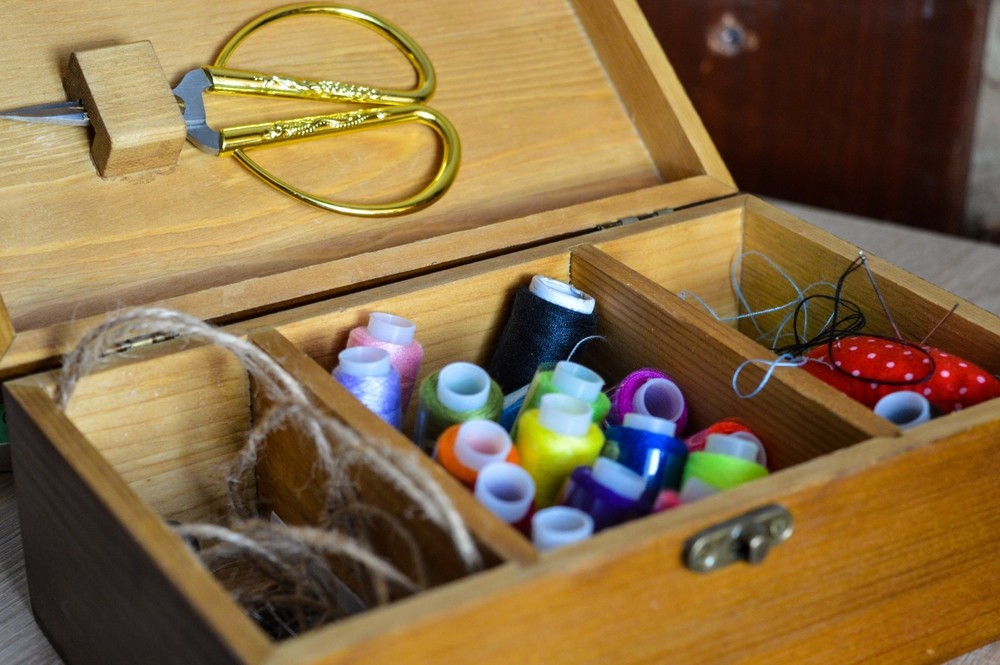Sewing is an age-old skill that provides one of the best methods to extend the life of both clothing and household fabrics. With a resurgence in the popularity of sustainable living and frugality, learning some simple sewing techniques can save money, foster creativity, and contribute positively to the environment. Whether you’re looking to make an educated buying decision by choosing durable fabrics or enhance your sewing skills to keep your favorite items in use longer, understanding some fundamental techniques is invaluable.
Choose Quality Over Quantity
When it comes to both clothing and household fabrics, investing in quality materials is key. It may seem tempting to buy cheaper items in bulk, but higher quality fabrics often last much longer. Look for fabrics that are tightly woven and feel substantial in your hand. Natural fibers, such as cotton, wool, and linen, generally stand the test of time better than synthetic fibers.
Thread count can also help when selecting durable fabrics. Higher thread counts often suggest longer-lasting fabrics, though this isn’t a rule set in stone. Conducting a quick fabric pull test by tugging both warp and weft can also indicate sturdiness—if the fabric keeps its shape, it likely offers better resilience.
Basic Sewing Kit Essentials
To make repairs or modifications, setting up a basic sewing kit with essential tools is necessary. Here are the items you should have on hand:
- Needles: Have assorted sizes for different fabric weights.
- Thread: A basic collection of colors, especially neutrals, helps you mix and match easily.
- Scissors: Invest in fabric scissors and keep them sharp.
- Pins: Use to hold fabric together while you sew.
- Measuring Tape: For accurate repairs and alterations.
- Seam Ripper: Handy for removing unwanted stitches.
- Marking Tools: Chalk or fabric pens can mark fabric without leaving a permanent mark.
Having a well-stocked sewing kit makes it easier to tackle any repairs or modifications, significantly increasing the lifespan of your items without having to rush to the store for missing tools.
Repair Instead of Replace
One of the simplest ways to extend the life of clothing and household fabrics is through small repairs. This not only saves money but also reduces waste. For minor tears or holes, you can mend them with basic stitches like:
- Running Stitch: Ideal for joining two pieces of fabric quickly. Keep the stitches even for durability.
- Backstitch: Stronger than a running stitch, useful for seams or more durable repairs.
- Slip Stitch: Perfect for hemming and invisible mending.
Repairing loose buttons can also be a quick fix. Cross-stitch the button thread for extra security. If the fabric around buttonholes is fraying, reinforce them with machine-sewn buttonholes or hand-stitched binding.
Master Basic Alterations
You don’t need to be a professional tailor to make essential clothing alterations. Learn how to adjust hems on pants and skirts. Bringing a hem up can reinvigorate the look of clothes and eliminate frayed edges. Also, learning to take in or let out seams at the waist, hips, or shoulders can profoundly impact the fit and comfort of garments.
Changing out old, dated buttons or even adding darts to provide more shape to blouses are minor alterations that make a significant difference. These skills allow you to upcycle older clothing, adapting them to current trends or personal comfort.
Prevent Wear and Tear
Foresee potential wear and tear by reinforcing vulnerable areas of clothing. Elbows, knees, and inner thighs are common sites for fabric fatigue. Add patches to these areas before they thin too much. Not only will this prevent tears, but it can also be a statement fashion choice.
For household fabrics, using fabric protectors on upholstery can prevent dirt and stains from setting, prolonging the life of sofas, curtains, and other furnishings. Similarly, rotating cushions and using both sides of reversible items can evenly distribute wear.
Storage Solutions
Proper storage of clothing and household fabrics can make a tremendous difference in their longevity. Store clothes in a cool, dry environment to prevent mold and mildew. Avoid wire hangers as they can distort fabric; instead, use padded or wooden ones.
Fold heavy sweaters instead of hanging them to maintain their shape. Use vacuum-seal bags for seasonal storage, ensuring clothes are clean and fully dry to avoid trapping odors or moisture.
For household linens, avoid overcrowding drawers and shelves, which can wrinkle fabrics over time. Opt for breathable garment bags or fabric storage bins to maintain air circulation.
Sustainable Fabric Care
The way you wash and care for your fabrics has a direct impact on their lifespan. Use gentle cycles and cold water for most washes, and avoid using too much detergent, which can build up and weaken fibers over time. Line dry when possible, as this reduces the stress and wear that come from dryers.
If you opt for machine drying, use a low heat setting. High temperatures not only fade colors but can cause irreversible shrinkage in natural fabrics. This practice also pertains to blocking sunlight from drying clothes, as UV rays can bleach colors and cause deterioration over time.
Learn to Line or Interline
Lining clothing pieces or household fabrics, like curtains, adds an additional protective layer, reducing direct wear. Lining is especially useful in formal wear, jackets, and wool garments, enhancing both the structure and drape. For curtains, lining can offer insulation benefits, adding to energy savings in addition to fabric preservation.
Recycle and Reuse
When a piece of clothing or household fabric is no longer wearable or useful in its original form, consider recycling or reusing it. Old jeans can become durable tote bags; fabric scraps can be transformed into quilts, pillows, or patchwork clothing. This creative reuse not only keeps fabrics out of landfills but also leads to one-of-a-kind pieces that hold personal significance and function.
Beyond repurposing, donating gently used items ensures they find a second life. Consignment or vintage stores often accept specific fabrics and designs, providing an additional avenue for sustainable fabric use.
Sewing is not only practical but also a satisfying skill that empowers consumers to make well-informed decisions about their fabric use. Each stitch is more than just thread binding fabric—it’s a stitch towards sustainability, frugality, and creativity in textile management. By adapting these simple sewing tips, you’re taking a significant step toward extending the lifespan of your clothes and household fabrics and contributing to a more sustainable lifestyle.



